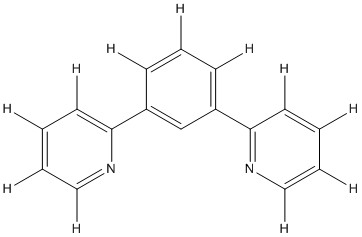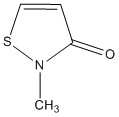Chemistry 401
Intermediate Inorganic Chemistry
University of Rhode Island
Fall 2013
Final Exam
All references are to volume 53 of Inorganic Chemistry (2013).
1. Ourane, Gaudin, Zouari, Couillard, and Bobet (pages 13289 – 13291) reported the structure of NdNiMg5, which is described as two interpenetrating networks of Mg and NdNi. In the Mg network the Mg-Mg distances are found to be 310.8 to 322.3 pm. Is this better described as metallic or covalent? Explain your reasoning. In the NdNi network two Nd-Ni distances were reported, 283.6 pm and 310.9 pm. Estimate the metallic radius and the covalent radius for Nd. Useful information: covalent radii, Mg 130 pm, Ni 120 pm; metallic radii, Mg 160 pm, Ni 125 pm.
2. Cho, Joseph, and Rose (pages 13298 – 13300) used the ligand shown below to synthesize some cobalt complexes. Predict how this ligand would bind to Co2+.
3. Mahesh, Rao, Thomas, Francis, and Koshy (pages 13204 – 13313) doped Eu3+ into some oxides to study the luminescent properties. Give the electron configuration and ground state term symbol for Eu3+.
4. Pagola, Trowell, Havas, Reed, Chan, Van Dongen, and DeFotis (pages 13341 – 13350) determined the structure and magnetic properties for MnCl2·H2O and CoCl2·H2O. Each of these compounds is 6-coordinate (the chloride ions bridge between metals ions to fill the coordination sphere). Estimate the spin-only magnetic moment for each of these compounds. The observed magnetic moments at room temperature were 5.92 μB for MnCl2·H2O and 4.85 μB for CoCl2·H2O. Explain any differences between the observed and predicted magnetic moments.
5. Dixon, Alary, Boggio-Pasqua, and Heully (pages 13369 – 13374) synthesized bis(η1-1,3-dipyridylbenzene)iron(II). Draw the structure, predict the stability, and give the point group of the compound. The ligand is shown below.
6. Kato, Unoura, Takayanagi, Ikeda, Fujihara, and Nagasawa (pages 13375 – 13383) showed that the ligand shown below is ambidentate, with coordination to either the S or O atoms. Show the preferred resonance structure for each mode of bonding. Why is coordination to the N atom not observed?
7. Pitchumony, Banevicius, Janzen, Zubieta, and Valliant (pages 13521 – 13528) studied the complex shown below. Give the name, the point group, and predict the stability of the ion.
8. Jung, Ohkubo, Prokop-Prigge, Neu, Goldberg, and Fukuzumi (pages 13594 – 13604) studied redox reactions of Mn centers. Balance the reaction below, where L is a tetradentate cyclic ligand that does not change structure during the reaction. Use acidic conditions.
MnL + H2O2 + C6(CH3)6 → MnLO + C6(CH3)5CH2OH
9. Seibel, Roudebush, Wu, Huang, Ali, Ji, and Cava (pages 13605 – 13611) characterized Na3Ni2BiO6. Find the oxidation state of each atom, given that the measured magnetic moment is 2.8 μB.
10. Fischer, Joas, Klapötke, and Stierstorfer (pages 13791 – 13802) synthesized 3-amino-1-nitroguanidine, shown below. Predict the most basic site and explain your reasoning.

.jpg)


(py)(CO)3.jpg)
